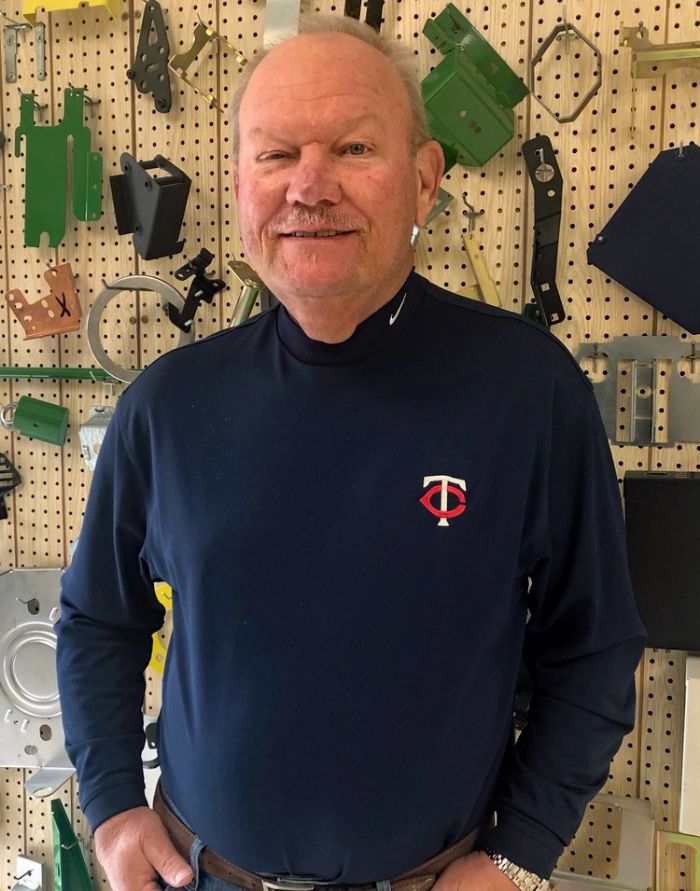(Note: Per the EOS Worldwide website, an EOS strives to bring all of an organization’s employees onto the same page, ensuring that every employee knows where the company is going and how it plans to get there. It’s based on discipline and accountability throughout the company so that everyone executes on the vision—every day. And when it comes to the leadership team, an EOS fosters cohesiveness.)
Q: What are the biggest challenges you face as a company leader?
Clow: Like most metal formers, we’re challenged to solve the skilled-labor shortage, a particularly significant issue as the economy returns to robustness. And this also makes it more difficult to install the RPRS strategy throughout every facet of the company. That challenge has our management team turning more toward automation on the plant floor.
We have 485 employees and I have enough work for 550 people. We can’t get our headcount where we need it, so we’ll invest $1 million this year to develop enough automation to account for the equivalent of 10 to 12 production workers, and then look to add more automation in coming years.
While we’ve had robotic welding in place for 20 years, we’ve just started to introduce robotics into our pressroom. We’ve automated five presses in the last couple of years, using proprietary technology, and will soon automate four more presses. And we’re automating the machining centers in our tool and die department.
Q: What are two or three of the most important things you look for in mid-level managers?
Clow: We task our management team with completing the RPRS strategy throughout the company. And, of course, we expect them to be team players and to look at the whole picture as they execute their responsibilities.
With the labor shortage, we’re often forced to employ people who initially may not fit the RPRS mold, so we need our managers to excel at evaluating their people and identifying opportunities to provide the right training to help them develop. In fact, we’ve been including in our training regimen the PMA EDU program, and have purchased 30 one-month EDU licenses to date.
Q: What are two things that you believe your company is doing well? What's one thing that you wish you could change?
Clow: I know we’re adept at providing world-class service including offering competitive pricing and excellent quality. Our sales and marketing team keeps a close on customer feedback and works hard to track and respond to customer comments. We supply several major OEMs in key markets including farm equipment and recreational vehicles, and they’re all diligent in grading their suppliers. We listen closely and respond to that feedback.
We also have a large customer-service department—10 employees, all focused on tracking key performance indicators such as on-time delivery. We have probably 17,000 active part numbers and more than 400 accounts, so it makes sense to invest in customer service.
As noted earlier, I sure wish I could solve the labor challenge, but we are making progress by automating, and not just in production. We’re planning, either later this year or in 2022, to automate our shipping department. We’re shipping daily to some customers, and three to four times per week for many others, and that’s very labor-intensive. So, we’re planning to build an addition onto the plant to house automation equipment to remove much of the labor from the shipping operation. We’ve got 70 people working in shipping, and if we automate the way I hope to, we’ll get that down to 30 to 35 people.
Q: How do you encourage and motivate your management team?
Clow: We strive to treat our managers, and our entire team, with respect, and (as noted above) we hold everyone responsible and accountable. While ‘Not my job’ is not spoken here, we depend on each other to get the job done and pledge to not let our fellow employees down.
We promote from within, and we work hard to ensure that we give our managers the tools needed to be successful. We budget $3 million annually for new equipment to support our team’s efforts to improve productivity and performance. And we provide all of the training they need to continue to develop professionally.
Bottom line: We’re willing to spend money to make money, to upgrade the equipment in the plant and to develop our workforce.
Q: Can you provide an example of a solid management decision that you made during the COVID-19 pandemic, and how it helped to address a major pandemic-related challenge?
Clow: When the pandemic hit, we were very understanding that if our employees felt unsafe coming to work, they could stay home. We lost 40,000 to 50,000 hours of production time from April to December 2020, and we’re still trying to recover. We didn’t lay anyone off and encouraged our employees that stayed home during the worst of the pandemic to come back, and nearly all of them have.
To help ensure the health and safety of our workforce, we’ve been working with Crow Wing County officials to provide vaccinations at our facility for those employees that want them. We also invested greatly in cleaning and disinfecting the facility on a regular basis, established new, stringent rules on wearing face masks, and encourage frequent hand washing.
Of 485 employees, we’ve only had seven test positive for COVID-19, a low number that we’re very proud of.
Technologies: Management
 This month we invite Reggie Clow, owner of Clow Stamping Co.,
Merrifield, MN, to share his insights. Clow Stamping, founded in 1970, is a
short-run stamper and fabricator with nearly 300,000 sq. ft. under roof and
some 500 employees. Its operating credo includes this salute to teamwork:
This month we invite Reggie Clow, owner of Clow Stamping Co.,
Merrifield, MN, to share his insights. Clow Stamping, founded in 1970, is a
short-run stamper and fabricator with nearly 300,000 sq. ft. under roof and
some 500 employees. Its operating credo includes this salute to teamwork:








